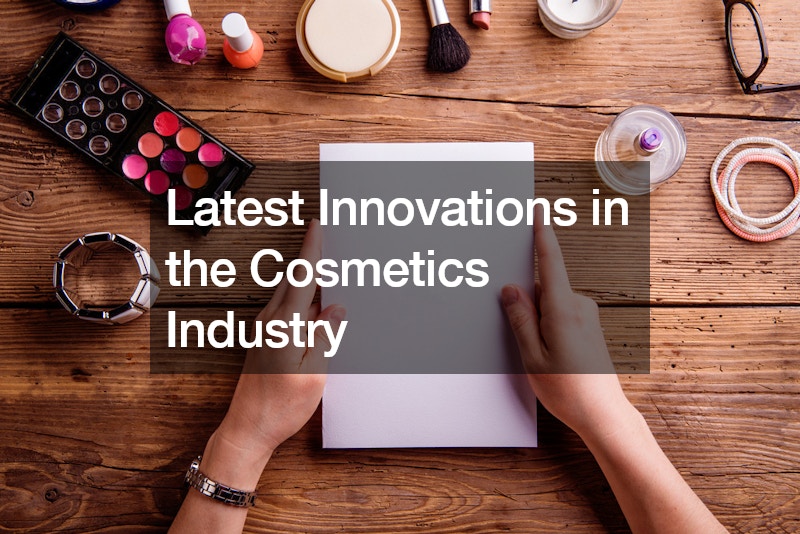The cosmetics industry is undergoing a transformative period marked by a surge in innovation and sustainability initiatives. From novel materials to advanced technologies, brands are continuously pushing the boundaries to meet evolving consumer demands while reducing environmental impact. In this article, we explore some of the latest innovations reshaping the cosmetics industry landscape.
Biodegradable Packaging Solutions
One of the most significant trends in cosmetics packaging is the adoption of biodegradable materials. As consumers become increasingly eco-conscious, brands are shifting away from traditional plastics towards biodegradable alternatives.
These materials break down naturally over time, reducing the burden on landfills and minimizing pollution. Biodegradable packaging options include containers made from materials such as PLA (polylactic acid), PHA (polyhydroxyalkanoates), and compostable paper. By embracing biodegradable packaging solutions, cosmetics brands are aligning with sustainability goals and meeting the expectations of environmentally conscious consumers.
Refillable Cosmetic Containers
Refillable cosmetic packaging is gaining momentum as a sustainable alternative to single-use containers. This innovative approach allows consumers to replenish their favorite products without discarding the packaging after each use. By offering refillable options for items like foundation, moisturizer, and shampoo, brands are reducing plastic waste and encouraging circular consumption patterns. Refill stations and mail-in programs make it convenient for customers to restock their cosmetics while minimizing their environmental footprint. With refillable packaging, cosmetics brands are promoting sustainability and fostering long-term customer loyalty.
Smart Packaging Technologies
Advancements in smart packaging technologies are revolutionizing the cosmetics industry, enhancing product functionality and user experience. Smart packaging solutions incorporate sensors, QR codes, and RFID tags to provide valuable information to consumers. For example, RFID-enabled packaging can authenticate product authenticity, track expiration dates, and offer personalized recommendations based on individual preferences. QR codes on packaging allow customers to access product information, ingredient lists, and usage instructions instantly. By leveraging smart packaging technologies, cosmetics brands are enhancing transparency, engaging customers, and delivering a more interactive shopping experience.
Customizable Cosmetic Packaging
Customizable packaging solutions are gaining popularity as brands seek to cater to individual preferences and foster brand loyalty. Through online platforms and in-store experiences, consumers can personalize their cosmetic packaging by choosing colors, designs, and product formulations. Customization options extend beyond aesthetics, allowing customers to select packaging sizes, textures, and even fragrance profiles. By offering customizable packaging, cosmetics brands are empowering consumers to express their unique style while creating a more memorable and engaging shopping experience. Additionally, personalized packaging can drive repeat purchases and strengthen brand relationships.
Sustainable Ingredients and Formulations
In addition to innovative packaging solutions, cosmetics brands are also focusing on sustainable ingredient sourcing and formulations. Consumers are increasingly concerned about the environmental impact of cosmetic products and are seeking out brands that prioritize sustainability throughout the entire product lifecycle. To meet this demand, cosmetic companies are investing in research and development to discover new, eco-friendly ingredients and manufacturing processes. This includes sourcing natural and organic ingredients, using renewable energy sources in production, and minimizing water usage and waste generation.
Furthermore, brands are exploring alternative ingredients that are not only sustainable but also offer unique benefits for the skin and hair. For example, ingredients like bamboo extract, sea buckthorn oil, and mushroom extracts are gaining popularity for their nourishing and rejuvenating properties. By incorporating these sustainable ingredients into their formulations, cosmetics brands can appeal to environmentally conscious consumers while delivering effective and innovative products.
Clean Beauty and Transparency
Clean beauty has emerged as a significant trend in the cosmetics industry, with consumers prioritizing products that are free from potentially harmful chemicals and additives. Brands are responding to this demand by offering clean, transparent formulations that are free from ingredients like parabens, sulfates, phthalates, and synthetic fragrances. In addition to removing harmful ingredients, brands are also providing greater transparency about their sourcing, manufacturing processes, and product testing methods.
To communicate their commitment to clean beauty, many brands are obtaining certifications from organizations like the Environmental Working Group (EWG), Leaping Bunny, and the Clean Beauty Alliance. These certifications provide consumers with assurance that the products they are purchasing meet rigorous standards for safety, sustainability, and ethical production practices. By embracing clean beauty principles and promoting transparency, cosmetics brands can build trust with consumers and differentiate themselves in a crowded marketplace.
Investment in Recycling Infrastructure
Another key development in the cosmetics industry is the investment in recycling infrastructure and initiatives to promote circularity. Cosmetics companies are partnering with recycling organizations, government agencies, and industry stakeholders to improve the collection, sorting, and processing of cosmetic packaging materials. This includes investing in advanced recycling technologies, establishing take-back programs for used packaging, and promoting consumer education and awareness about recycling best practices.
By closing the loop on cosmetic packaging, brands can reduce their environmental impact and contribute to a more sustainable future. Recycling initiatives also provide opportunities for cosmetics companies to engage with consumers and involve them in the sustainability journey. Through education campaigns, incentives, and rewards programs, brands can encourage consumers to recycle their empty packaging and take an active role in reducing waste and preserving the planet.
Conclusion
In conclusion, the cosmetics industry is embracing innovation and sustainability to meet the evolving needs of consumers and address environmental concerns. From biodegradable materials and refillable containers to smart packaging technologies and customizable solutions, brands are leveraging cutting-edge innovations to reduce waste, enhance transparency, and deliver superior user experiences. As the demand for eco-friendly and personalized cosmetics continues to grow, cosmetics fulfilment companies must stay ahead of the curve by adopting innovative packaging solutions and embracing sustainable practices. By prioritizing innovation and sustainability, the cosmetics industry can pave the way for a more environmentally conscious and customer-centric future.
.

